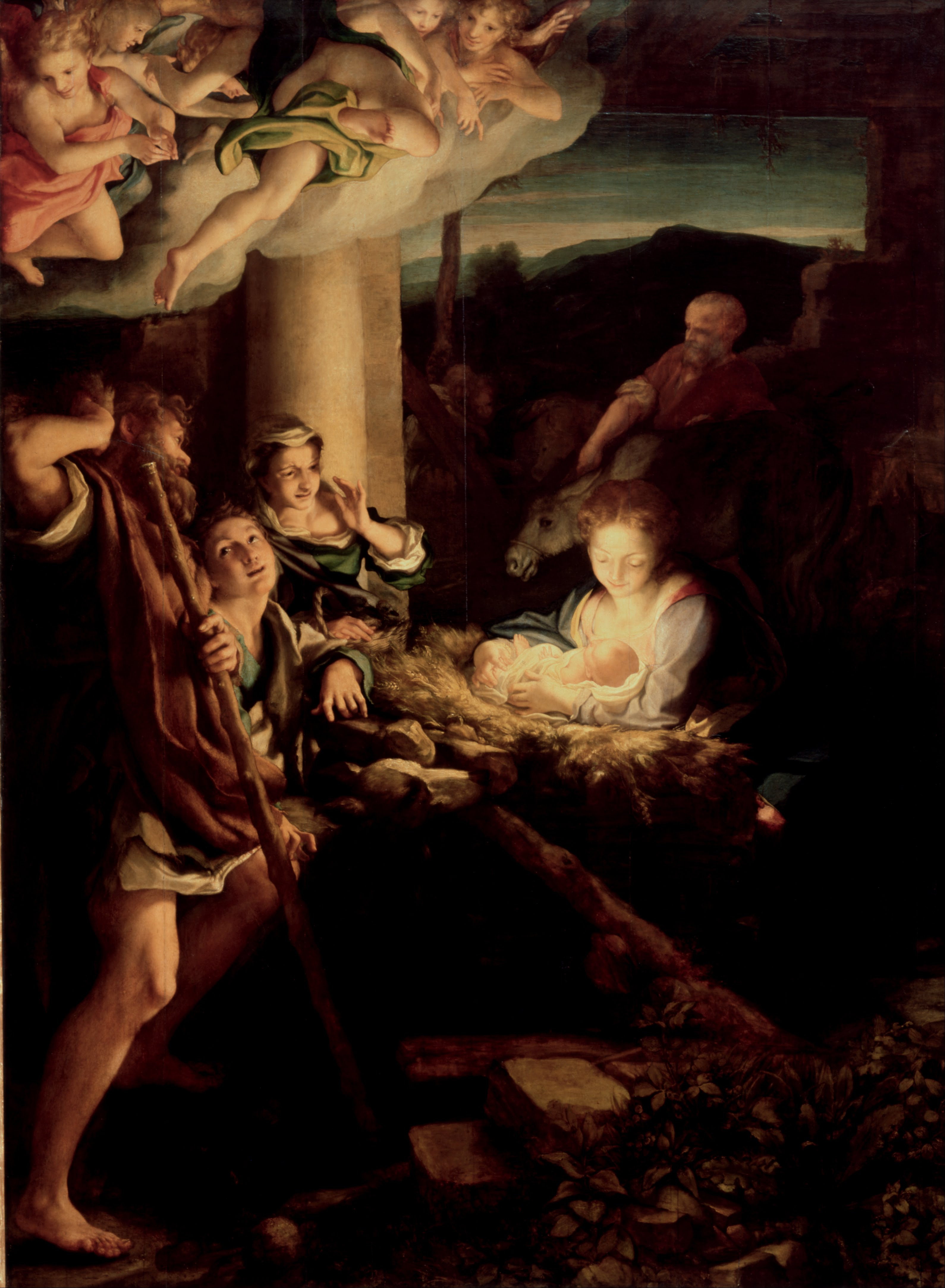
“The painter who was looked upon by later generations as the most ‘progressive’ and most daring innovator of the whole period [early sixteenth century]… was Antonio Allegri, called Correggio… [H]e worked out entirely new effects [of light and shade] which greatly influenced later schools of painters…
“At first sight the arrangement looks quite artless and casual. The crowded scene on the left does not seem to be balanced by any corresponding group on the right. It is balanced through the emphasis which the light gives to the group of the Virgin and the Child. Correggio even more than Titian exploited the discovery that color and light can be used to balance forms and to direct our eyes along certain lines. It is we who rush to the scene with the shepherd and who are made to see what he sees—the miracle of the Light that shone in the darkness of which the Gospel of St. John speaks.”
Ernst H. Gombrich, “Chapter 16: Light and Color,” The Story of Art, 15th century

Here is a painting which serves as proof that Caravaggio did not invent tenebrism! Look how it is portrayed in Holy Night! It is extremely Caravaggio-esque even if it is way before the Baroque period. I am a great lover of tenebrism, so any painting exhibiting such emphasis on light and dark for a spiritual reason is on my favorites list.